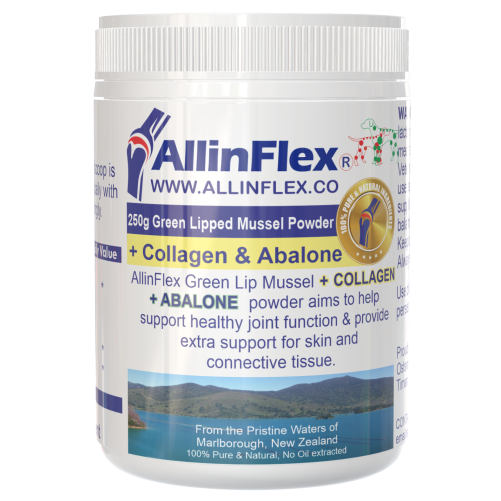Joint Treatment for Dogs in pain due to Arthritis
Saskia OstermeierArthritis can greatly affect a dog's quality of life, hindering its ability to move freely and carry out day-to-day activities.
As a dog owner, seeing your beloved pet in pain due to arthritis can be heart-wrenching. Arthritis is an inflammatory condition that causes discomfort and pain in the dog's joints.
The symptoms, which range from mild to severe, can significantly affect a dog's ability to move around. As a result, a once active and playful dog might turn into a limping, less energetic one.
The focus of this article, however, is to provide hope and guidance.
We aim to explore natural, non-steroidal treatments for arthritis in dogs, providing alternatives that have fewer side effects compared to traditional drug treatments.
We are embarking on this journey of understanding arthritis in dogs and discussing potential solutions, not just to manage but also to prevent this a illogical condition.
Stay with us as we delve into this topic, providing insights on arthritis treatment, natural remedies, and ways to maintain your dog's joint health without relying solely on medication.
Understanding Arthritis in Dogs
When it comes to our canine companions, knowledge is the first step towards ensuring their health and well-being. A proper understanding of what arthritis is, its causes, and its symptoms can go a long way in managing and treating the condition.
Causes and Symptoms of Arthritis in Dogs
Arthritis in dogs is often a result of aging, but it can also stem from overuse or injury to the joints. The condition leads to the gradual degradation of the cartilage that cushions the joints, causing pain and discomfort during movement.
The symptoms are varied and can range from mild to severe. Often, owners may notice that their pet is limping, especially after a period of inactivity or after intense activity.
Dogs may also show signs of stiffness, have difficulty getting up or laying down, and may become reluctant to engage in activities they previously enjoyed like climbing stairs or going for walks.
These are clear indicators that joint pain is affecting your dog's quality of life and might be a sign of arthritis.
Common Misconceptions about Arthritis in Dogs
Despite its common occurrence, several misconceptions surround arthritis in dogs. Many people believe that it only affects older dogs. While it's true that the risk increases with age, even young dogs can develop arthritis, especially if they've suffered a joint injury or are genetically predisposed.
Another prevalent misconception is that arthritis can't be managed without using drugs. While medication can certainly help manage the pain and inflammation associated with arthritis, it's not the only solution.
As we will discuss in the following sections, there are several natural, non-steroidal treatments and preventative measures that can effectively help manage and control the symptoms of arthritis in dogs.
Natural and Non-Steroidal Arthritis Treatment for Dogs
Many dog owners are increasingly seeking out natural, non-steroidal treatments to manage their pet's arthritis. These treatments often offer fewer side effects and can be incorporated into the dog's daily routine to not only alleviate symptoms but also improve their overall health.
The Role of Diet in Arthritis Management
The importance of a well-balanced diet cannot be overstated when it comes to managing arthritis in dogs. Certain foods are known to have anti-inflammatory properties and can help reduce the inflammation that exacerbates joint pain. Omega-3 fatty acids, found in fish and flaxseeds, for instance, are highly beneficial.
Similarly, fresh fruits and vegetables, particularly those rich in antioxidants, can also help fight inflammation.
It's equally important to maintain a healthy weight in dogs suffering from arthritis. Carrying extra weight can put additional strain on already painful joints. A balanced, portion-controlled diet can help achieve and maintain an optimal weight.
Exercise as a Natural Treatment
Regular exercise is key to keeping a dog's joints healthy. However, it's important to note that not all types of exercise are suitable for dogs with arthritis. High-impact activities can further strain the joints and exacerbate the condition. Instead, low-impact exercises such as walking or swimming can be beneficial.
These activities strengthen the muscles around the joints, providing them with more support and reducing the pressure on them.
Alternative Therapies for Arthritis Treatment
In addition to diet and exercise, alternative therapies have shown promise in treating arthritis in dogs. Physical therapy, for instance, can help improve a dog's range of motion and strengthen its muscles.
Acupuncture has been known to provide pain relief, while hydrotherapy, which involves exercise in water, can help a dog exercise without putting stress on its joints.
All these therapies should be considered as part of a holistic treatment approach and be administered under the guidance of a professional.
Prevention of Arthritis in Dogs
While there's no guaranteed method to completely prevent arthritis, certain steps can be taken to significantly reduce the risk and delay the onset of this debilitating condition in dogs.
Healthy Lifestyle Choices to Prevent Arthritis
The foundation of arthritis prevention lies in promoting a healthy lifestyle for your dog. A balanced diet, regular exercise, and maintaining an optimal weight play critical roles in joint health.
As previously discussed, a diet rich in anti-inflammatory foods can help keep inflammation in check. Regular, low-impact exercise can help keep your dog's joints flexible and the surrounding muscles strong, reducing the strain on the joints.
Also, overweight dogs are at a higher risk of developing arthritis due to the excess pressure exerted on their joints. Keeping your dog's weight in check can help maintain joint health and reduce the risk of arthritis.
Regular Check-Ups as Prevention
Regular veterinary check-ups are crucial in preventing arthritis in dogs. Early detection of the signs of arthritis can lead to early intervention, which can slow the progression of the disease and improve your dog's quality of life. Veterinarians can provide guidance on diet, exercise, and other preventative measures based on your dog's specific needs and risk factors.
It's important to remember that prevention is always better than cure. While arthritis is a common condition in dogs, taking these preventative measures can go a long way in keeping your dog healthy, active, and happy.
Arthritis in dogs can be a challenging condition to manage, but it's certainly not the end of the road for your beloved pet.
With the right knowledge and approach, it's possible to not only manage arthritis symptoms but also maintain and even improve your dog's quality of life.
This article has provided insights into natural, non-steroidal treatments for arthritis in dogs. From understanding the causes and symptoms of arthritis to exploring dietary changes, exercises, and alternative therapies, we've explored a variety of approaches that can contribute to your dog's joint health.
It's important to remember that every dog is unique, and what works for one might not work for another. As such, always consult with your vet before implementing any new treatments or making significant changes to your dog's routine. Your vet can provide personalized advice and guidance based on your dog's specific needs and condition.
Let's take a moment to appreciate our loyal companions. They depend on us for their health and happiness, and it's our responsibility to do everything in our power to ensure they live a long, healthy, and pain-free life.
To wrap up, arthritis in dogs is a condition that can be managed and even prevented with the right approach. There's no one-size-fits-all solution, but with patience, care, and regular veterinary guidance, your dog can continue to live a happy, fulfilling life.


